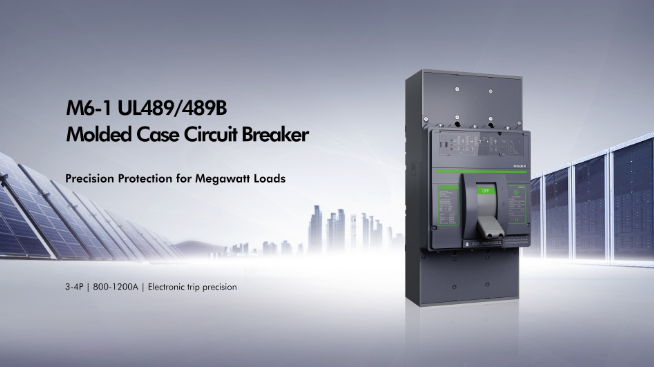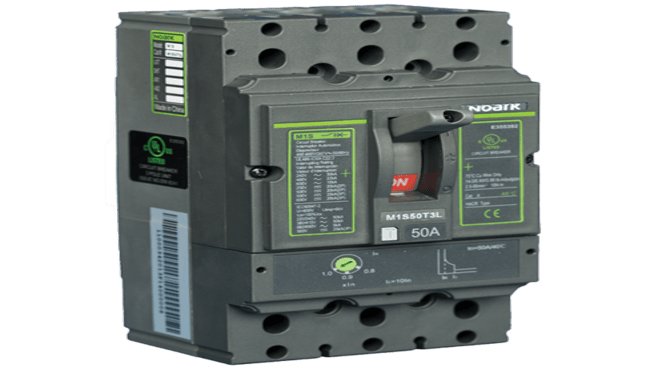Every circuit needs a “switch” that breaks current flow when short circuits or overload happen. Otherwise, the circuit overheats, which can cause damage and safety hazards.
Facilities may opt to use a power circuit breaker for this electrical “switch”. This device can rapidly cut off current once the protective trip units detect a fault current. And compared to old-fashioned fuses, power circuit breakers can restore power back to the circuit without change fuse.
In this article, we discuss the significant role of power circuit breakers in industrial and technologically-driven environments, as well as their mechanisms that make them work.
What are Power Circuit Breakers?
A power circuit breaker safeguards your circuit from faults like overcurrent or short circuit that can lead to fires or damage your equipment or appliances. When the circuit’s current exceeds a preset safe level, this device instantly disconnects the power supply to avoid wire damage.
From the name itself, a power circuit breaker uses power as the medium for interrupting the electrical arc that occurs when the circuit is opening. The cooling and dielectric properties of power help in arc suppression. This is the primary distinction between ACBs and other breakers that use oil or gas.
Moreover, power circuit breakers can detect “ground faults,” which occur when there is a break in the low-resistance grounding path of an electrical system. An insulation breakdown allows current to deviate from its intended circuit, posing a risk of electric shock upon contact. Once the circuit breaker detects a ground fault, the trip unit activates and sends off an alarm for the breaker to automatically shut off power to prevent electrocution.
Power circuit breakers have some advantages over well-known miniature or molded case circuit breakers. The former are made for higher current applications. They are also larger and bulkier (because of their higher capacity) and come with advanced functionalities such as digital trip units that track relevant power parameters.
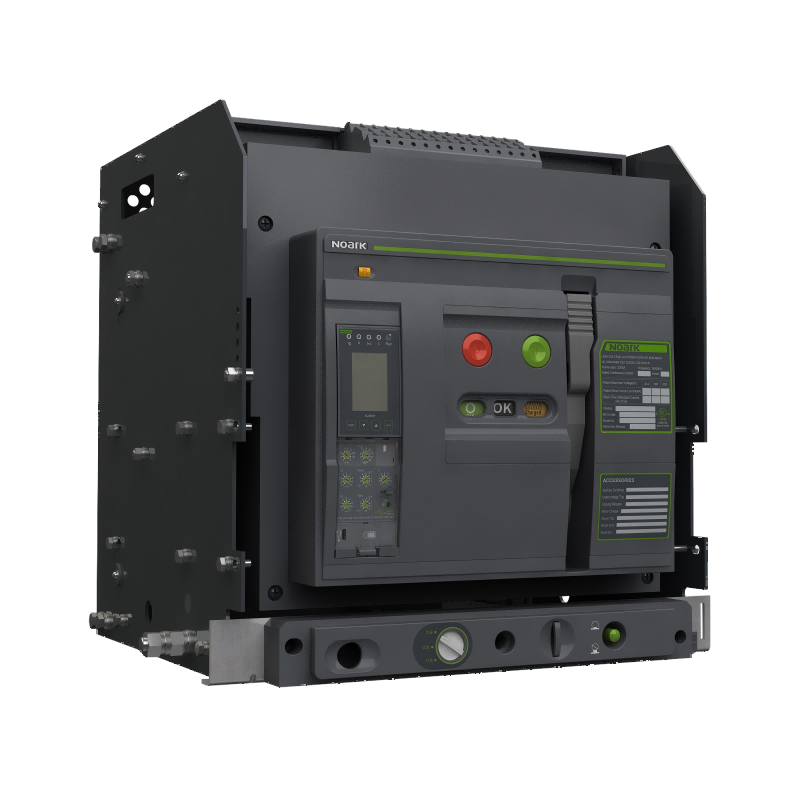
Key Components of A Power Circuit Breaker
Understanding the mechanism of a power circuit breaker entails familiarity with its primary components. Listed below are the common parts of this electric device.
- Contacts: These are conductive pieces (usually sliver alloy) that open or close the circuit. When it is closed, the electricity flows through the circuit. But when it is open, the current is interrupted and prevents damage to the downstream equipment during a short circuit.
- Arc Chutes: This extinguishes the arc formed when the contacts open due to high voltage. Some chutes also improve powerflow around the arc, which helps in heat dissipation.
- Operating Mechanism: This component converts electrical energy into mechanical energy to move contacts apart (for opening) or together (for closing). When it receives the trip unit’s signal (that a fault condition is detected), it moves the contacts to an open position.
- Trip Unit: This is the circuit breaker’s sensor. It detects if there is an irregularity in the electric flow, such as a short circuit or an overcurrent. It triggers the operating mechanism once a fault condition is identified.
- Frame: This is the structural component that houses and protects the internal components of the breaker. It also serves as an insulating barrier between live electrical parts and the external environment.
How Does a Power Circuit Breaker Work?
Under normal operating conditions, the contacts inside a power circuit breaker remain closed, allowing electrical current to flow uninterrupted through the system. These contacts are engineered to conduct electricity efficiently while withstanding rated current loads.
When an abnormal condition such as an overcurrent, short circuit, or thermal overload occurs, built-in trip units detect the anomaly. Depending on the design, these trip units may be thermal-magnetic or electronic (microprocessor-controlled). They continuously monitor current flow and, in some advanced systems, temperature and voltage.
Upon detecting a fault, the trip unit activates a mechanical release mechanism—often spring-loaded—that forces the contacts to rapidly separate. This sudden interruption generates an electric arc between the contacts.
To extinguish the arc, power circuit breakers use a combination of arc chutes and forced power (compressed power). The arc chute contains metallic plates that split and cool the arc, while the forced power helps blow the arc away, rapidly extinguishing it and minimizing damage to the contacts.
Once the arc is quenched and the contacts are fully separated (open position), the circuit is broken, preventing further current flow. The breaker remains open until it is reset, either manually or automatically, after resolving the fault.
Applications of Power Circuit Breakers in Power Systems
Industrial Facilities
Manufacturing plants for automotive, food processing, oil and gas, chemical, and data centers rely on power circuit breakers to protect equipment, heavy machinery, and even sensitive IT resources from overcurrent or short circuits.
For instance, CHINT’s A40, which conforms to ANSI C37.13, C37.16, C37.17, and C37.50 standards, can support 4000 amps with a maximum voltage of 847Vac, which makes it capable of handling modern industrial facilities. The A40 breakers provide various trip units, accessories, and communications options for effective safeguard against electric fault conditions.
Commercial Buildings
To protect the office infrastructure, circuit breakers are used on power circuits for computers and lighting. They automatically interrupt the flow of electricity during an overcurrent event, such as an overload caused by office equipment, thereby preventing system-wide damage.
Meanwhile, malls use power circuit breakers to safeguard power supplies for retail spaces, lighting, elevators, and escalators. Similar to their application in office buildings, these breakers are designed to trip immediately during a fault condition to protect the entire mall’s electrical system.
CHINT’s A32 power circuit breaker is one of the effective breakers for commercial establishments with its max voltage of up to 847Vac and capacity of up to 3200 amps. It is a top-notch OEM solution for low-voltage switchgear and customized power distribution assemblies in commercial applications.
Data Centers
To ensure uninterrupted operations, many data centers use power circuit breakers to protect critical IT infrastructure such as servers, computers, and transmission networks—from electrical faults. These breakers offer overcurrent protection and can automatically disconnect power during a fault, preventing damage to sensitive equipment.
Healthcare Facilities
Hospitals and other healthcare institutions use power circuit breakers to ensure a safe and reliable electrical system, which is essential for patient care and the uninterrupted operation of medical equipment.
For example, the main power circuit breaker in a hospital protects sensitive medical devices—such as MRI machines, nebulizers, and ventilators—in the event of an overload caused by equipment malfunction.
Additionally, many intensive care units (ICUs) utilize circuit breakers that facilitate automatic power transfer to backup generators during power outages. This guarantees the continuous operation of critical medical systems in the event of an electrical fault.
How to Test a Power Circuit Breaker Without Power?
Upon acquisition of a power circuit breaker, the next step is to test its effectiveness without using power. You need a multimeter for this phase.
Here’s how to perform the test.
- Step 1: Prepare for Safety. Wear appropriate Personal Protective Equipment (PPE) and remove any conductive jewelry.
- Step 2: Isolate the Circuit. Turn off the power to the circuit you intend to test.
- Step 3: Configure the Multimeter. Set the multimeter dial to the appropriate function, such as AC voltage (V~) or resistance (Ω).
- Step 4: Conduct the Test & Record. Carefully touch the probes to the test points to measure the desired parameter. Record the reading.
Invest in a Robust and Reliable Power Circuit Breaker From CHINT
In any modern industrial or commercial environment, the continuous and safe flow of electricity is the lifeblood of operations. However, this reliance on electrical power comes with inherent risks.
Unforeseen events like short circuits, overloads, or ground faults can occur in an instant, posing a significant threat not only to expensive machinery and sensitive electronics but, more importantly, to the personnel on site. This is where a high-quality power circuit breaker serves as an indispensable first line of defense.
It is not merely a component; it is a critical safety sentinel, engineered to ensure a secure and stable current along an electrical system. In the event of a fault, it acts decisively, tripping instantaneously to isolate the affected circuit and protect the entire facility.
The consequences of an unprotected fault can be catastrophic. An overload can lead to gradual overheating, damaging wiring insulation and causing premature equipment failure. A short circuit can trigger a violent surge of energy, resulting in fires, explosive arc flashes, and irreparable damage to critical infrastructure.
The financial impact of such events—from equipment replacement costs and prolonged operational downtime to potential legal liabilities—can be devastating. Therefore, investing in a superior circuit breaker is a fundamental step in risk mitigation and ensuring business continuity.
As a globally reputable provider of innovative energy solutions, CHINT is dedicated to advancing clean, efficient, and data-driven energy management. This forward-thinking philosophy is embedded in every product we create.
We are a leading brand of cutting-edge power circuit breakers meticulously designed for the demanding requirements of industrial and commercial applications. Our portfolio, including advanced Air Circuit Breakers (ACBs) and Molded Case Circuit Breakers (MCCBs), is engineered to meet stringent international standards, ensuring ultimate protection for your electrical systems, high-value equipment, and valued workers.
By choosing CHINT, you are not just buying a product; you are partnering with a leader in electrical safety. Our breakers offer exceptional reliability, high breaking capacity, and precise tripping mechanisms that safeguard your assets without unnecessary interruptions. Trust CHINT to provide the robust protection your facility needs to operate safely, efficiently, and with complete peace of mind.




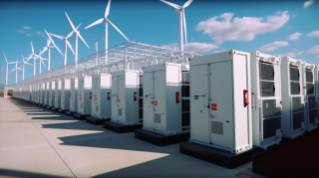
.jpeg)
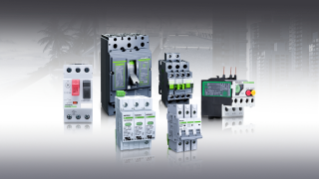
.jpeg)
.png)
.png)
.png)
